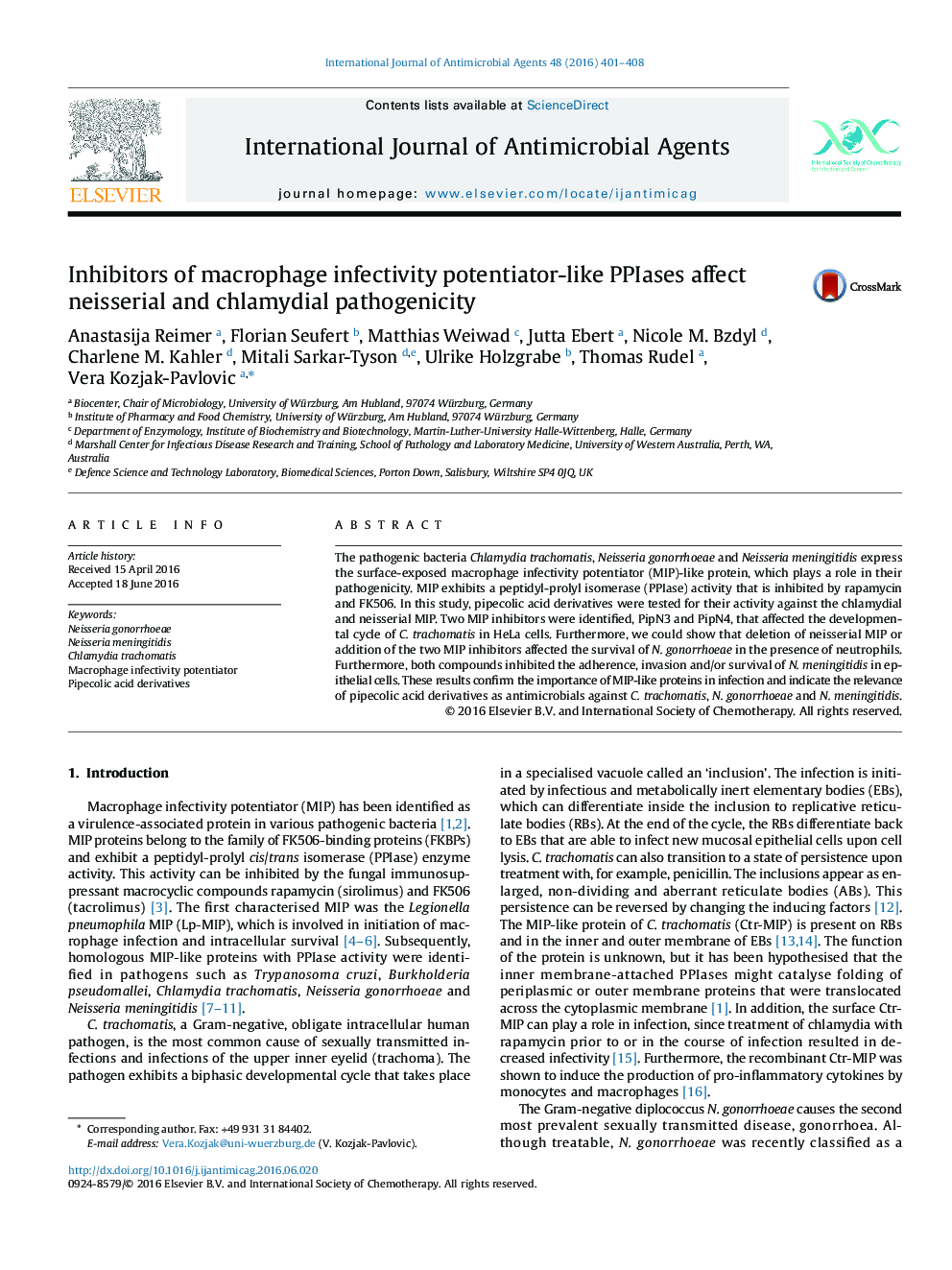| کد مقاله | کد نشریه | سال انتشار | مقاله انگلیسی | نسخه تمام متن |
|---|---|---|---|---|
| 3358375 | 1591750 | 2016 | 8 صفحه PDF | دانلود رایگان |
عنوان انگلیسی مقاله ISI
Inhibitors of macrophage infectivity potentiator-like PPIases affect neisserial and chlamydial pathogenicity
ترجمه فارسی عنوان
مهارکننده های پروتئین های تقویتکننده عفونت ماکروفاژها بر پاتوژنز نایسریال و کلامیدیا تاثیر می گذارند
دانلود مقاله + سفارش ترجمه
دانلود مقاله ISI انگلیسی
رایگان برای ایرانیان
کلمات کلیدی
موضوعات مرتبط
علوم زیستی و بیوفناوری
ایمنی شناسی و میکروب شناسی
میکروبیولوژی و بیوتکنولوژی کاربردی
چکیده انگلیسی
The pathogenic bacteria Chlamydia trachomatis, Neisseria gonorrhoeae and Neisseria meningitidis express the surface-exposed macrophage infectivity potentiator (MIP)-like protein, which plays a role in their pathogenicity. MIP exhibits a peptidyl-prolyl isomerase (PPIase) activity that is inhibited by rapamycin and FK506. In this study, pipecolic acid derivatives were tested for their activity against the chlamydial and neisserial MIP. Two MIP inhibitors were identified, PipN3 and PipN4, that affected the developmental cycle of C. trachomatis in HeLa cells. Furthermore, we could show that deletion of neisserial MIP or addition of the two MIP inhibitors affected the survival of N. gonorrhoeae in the presence of neutrophils. Furthermore, both compounds inhibited the adherence, invasion and/or survival of N. meningitidis in epithelial cells. These results confirm the importance of MIP-like proteins in infection and indicate the relevance of pipecolic acid derivatives as antimicrobials against C. trachomatis, N. gonorrhoeae and N. meningitidis.
ناشر
Database: Elsevier - ScienceDirect (ساینس دایرکت)
Journal: International Journal of Antimicrobial Agents - Volume 48, Issue 4, October 2016, Pages 401-408
Journal: International Journal of Antimicrobial Agents - Volume 48, Issue 4, October 2016, Pages 401-408
نویسندگان
Anastasija Reimer, Florian Seufert, Matthias Weiwad, Jutta Ebert, Nicole M. Bzdyl, Charlene M. Kahler, Mitali Sarkar-Tyson, Ulrike Holzgrabe, Thomas Rudel, Vera Kozjak-Pavlovic,
